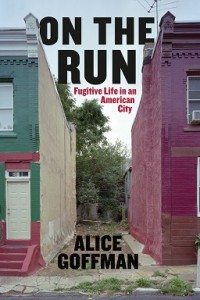Malcolm Gladwell profiles On the Run
From a profile of On the Run by Malcolm Gladwell in this week’s New Yorker:
It was simply a fact of American life. He saw the pattern being repeated in New York City during the nineteen-seventies, as the city’s demographics changed. The Lupollos’ gambling operations in Harlem had been taken over by African-Americans. In Brooklyn, the family had been forced to enter into a franchise arrangement with blacks and Puerto Ricans, limiting themselves to providing capital and arranging for police protection. “Things here in Brooklyn aren’t good for us now,” Uncle Phil told Ianni. “We’re moving out, and they’re moving in. I guess it’s their turn now.” In the early seventies, Ianni recruited eight black and Puerto Rican ex-cons—all of whom had gone to prison for organized-crime activities—to be his field assistants, and they came back with a picture of organized crime in Harlem that looked a lot like what had been going on in Little Italy seventy years earlier, only with drugs, rather than bootleg alcohol, as the currency of innovation. The newcomers, he predicted, would climb the ladder to respectability just as their predecessors had done. “It was toward the end of the Lupollo study that I became convinced that organized crime was a functional part of the American social system and should be viewed as one end of a continuum of business enterprises with legitimate business at the other end,” Ianni wrote. Fast-forward two generations and, with any luck, the grandchildren of the loan sharks and the street thugs would be riding horses in Old Westbury. It had happened before. Wouldn’t it happen again?
This is one of the questions at the heart of the sociologist Alice Goffman’s extraordinary new book, “On the Run: Fugitive Life in an American City.” The story she tells, however, is very different.
That story—an ethnography set in West Philadelphia that explores how the War on Drugs turned one neighborhood into a surveillance state—contextualizes the all-too-common toll the presumption of criminality takes on young black men, their families, and their communities. And unlike the story of organized crime in the twentieth century, which saw “respectability” as within reach of one or two generations, Goffman’s fieldwork demonstrates how the “once surveilled, always surveilled” mentality that polices our inner-city neighborhoods engenders a cycle of stigma, suppression, limitation, and control—and its very real human costs. At the same time, as with the shift of turf and contraband that characterized last century’s criminal underworld in New York, we see a pattern enforced demographically; the real question becomes whether or not its constituents have any chance—literally and figuratively—to escape.
Read more about On the Run here.
